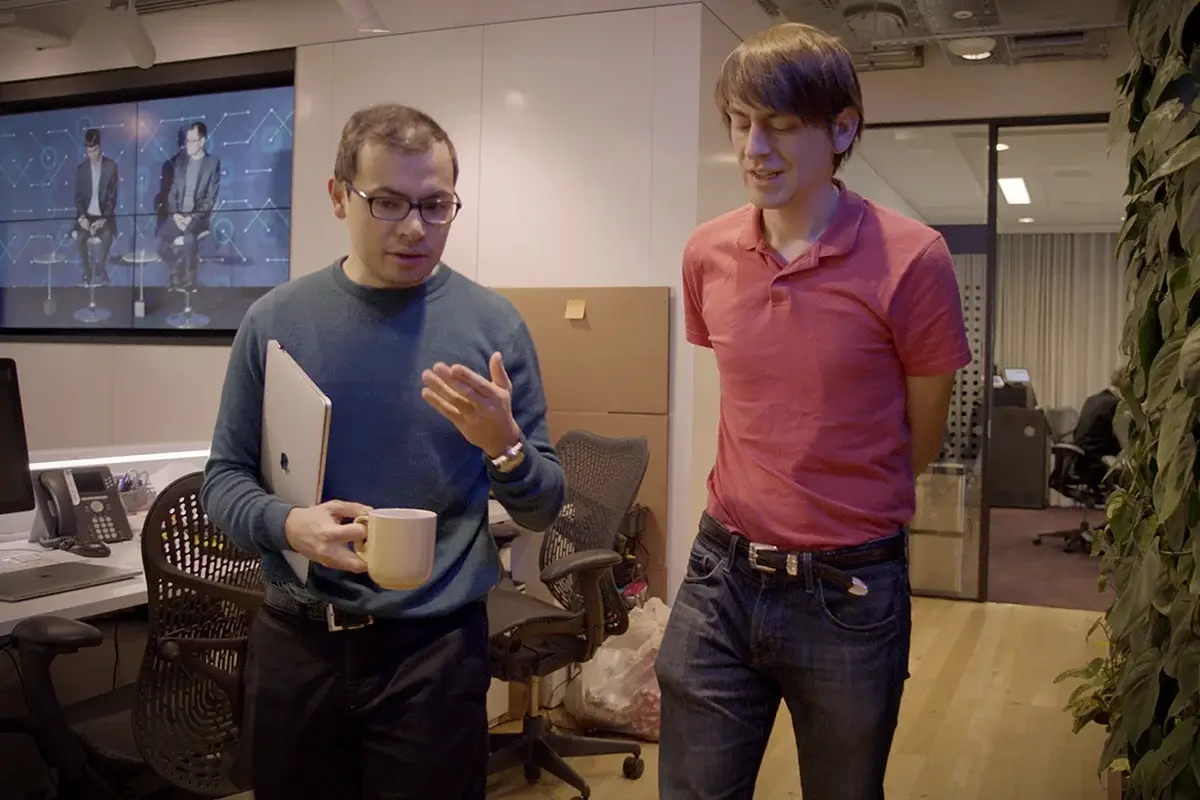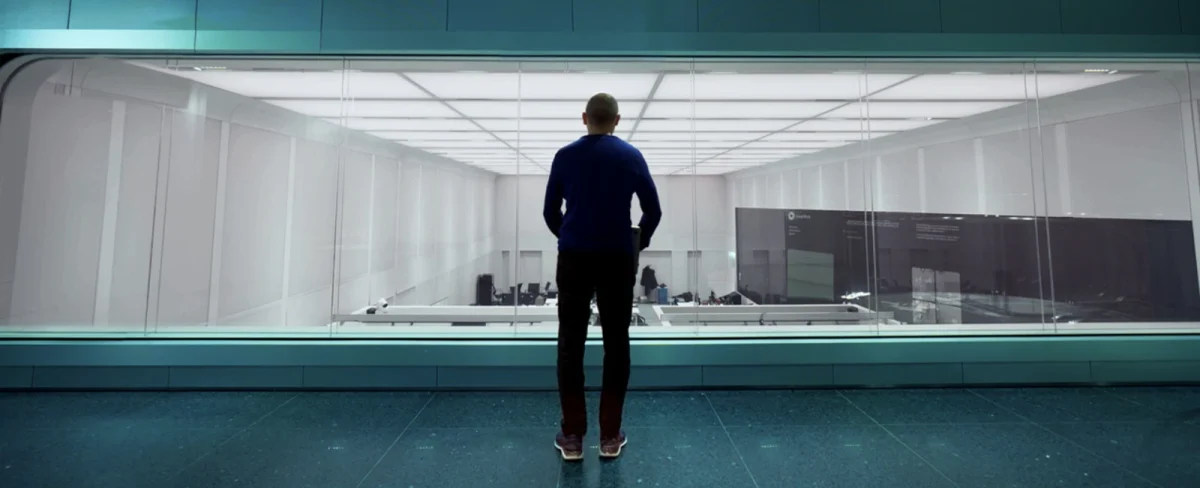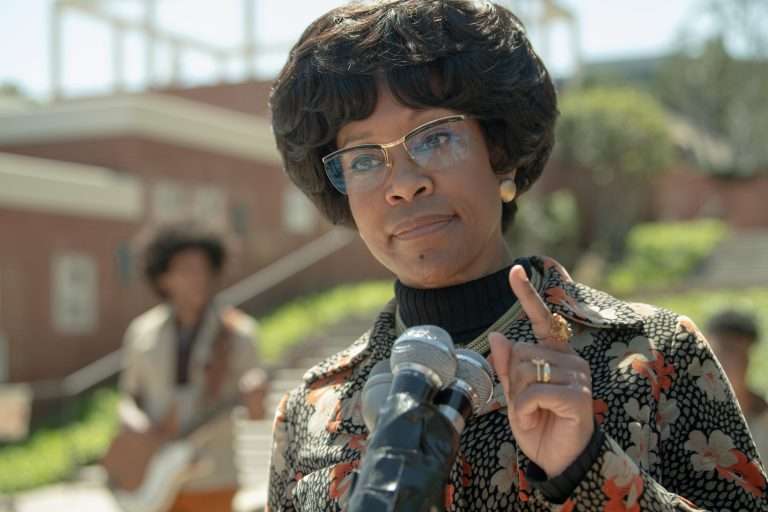So much hue and cry has been made over the negative impact of emerging AI technology that more cautiously optimistic perspectives on the issue are needed to provide balance in the discussion. Yes, we need to address the potential dangers to scholastic integrity and artistic freedom that it poses, but real threats are not an excuse for excessive alarmism, especially not when the possibility of significant advancement in all fields of science is at hand. From physics to physiology and cosmology to chemistry, some of our most vexing puzzles may finally reach resolution, or we at least may find better hints of how to complete them in the future.
A fascinating new documentary titled “The Thinking Game” helps to explain how AI has already proved an essential tool for one major scientific breakthrough. If the movie doesn’t allay some of the worst fears people have about this emerging technology, it will hopefully at least encourage viewers to try to understand it before reflexively rejecting it.
Director Greg Kohs wisely places less emphasis on the machinery itself than on the people responsible for its design and execution, a necessary reminder that artificial intelligence is itself a product of human ingenuity, and that human decisions will ultimately decide its final use. Instead of scapegoating new technology for ills new and imagined, it may be wiser to scrutinize how it mirrors our own flaws as well as our innate virtues.
Although there are many players in this new scenario of emerging technological and social change, the movie focuses on one major figure: Demis Hassabis, the British son of a Cypriot father and Singaporean mother who became known as a chess prodigy in his youth.
He explains to his interviewers that when he played one chess match after another, he started to engage in a metacognitive contemplation of his own winning strategies: how not just his brain, but everyone’s brain worked at solving problems, analyzing information, and generally helping one to go through the process of everyday life? What about the creative component that was so essential to not just chess playing but to science, art, and so much else? And could we somehow duplicate these processes on a computer or another machine?

Already, the precocious Hassabis was tackling the problem of AI, specifically artificial general intelligence, at least in his head. It would soon become an intellectual obsession, a challenge he was intent on cracking. Entering Cambridge University at age seventeen (the school wouldn’t let him in when he was still just sixteen), he pursued these problems with other bright young scientists while working for many computer game companies.
He had a clear plan behind all of this; when he pursued his PhD in neurobiology, he used the knowledge gleaned from his experience as a game programmer and designer to test AI models based on his studies of human cognition (there are times where the movie seems like a retort to all those parents who fretted about what videogames would do to their children’s brains!).
Founding the AI startup DeepMind in 2010, he started small, teaching machines to first play Atari games, before progressing upwards to chess (of course) and finally Go, the over two-thousand-year-old Chinese game that is still considered one of the most complex and difficult to master. The program Hassabis helped to write was able to beat world Go champion Lee Sedol in a match, helping to cement its author’s confidence in the future of generative AI.
He then proceeded to the next step: programming an AI to assist with a scientific task so complex, it had vexed all researchers who tackled it. Specifically, he and his DeepMind colleagues turned their attention to the protein-folding problem, an attempt to discern and predict the structure of proteins (“the engines of life,” we are reminded) in all three dimensions, a great challenge considering the physical and mathematical complexities involved.
The AI, named AlphaFold, more than met expectations: it was able to successfully determine the structure of every protein known to science, all two hundred million of them, a feat that led to the Nobel Prize in Chemistry being awarded to Hassabis and fellow project leader John M. Jumper.
One of the most peculiar features of “The Thinking Game” is that the less it focuses on its main human subject, the more interesting it becomes. Hassabis himself may be a fascinating personality, and his chess-champion childhood and cosmopolitan origins help make him stand out, but otherwise, he seems like quite a normal lad without any obvious eccentricities.
When the film chronicles the period where he simultaneously studied at Cambridge and worked for videogame company Bullfrog Studios, we’re impressed by how he was able to juggle both tasks, but it’s really not much different from the time most of us put in college while working our first full-time jobs. This part of the film may bring back your own memories of ennui mixed with back-breaking studies, yet in its own way, absolutely necessary if we are to understand what not only drives Hassibis but also all those who work with him as well.
Once focus shifts to the actual protein-folding project, Hassabis himself remains in the foreground while gradually but not completely fading out, as others working on the project start to get interviewed and focused on more by the filmmakers. At this point, the film starts following the same tack as other recent science documentaries such as “Particle Fever” and “Good Night Oppy,” where the emphasis is less on individual “Prime Movers” in research projects and much more on the organization and teamwork of the entire research group.
It’s as if one started out watching a documentary on Zubin Mehta or John Williams that midway through decided to focus more on the orchestra itself instead of its globally famous conductor. The documentary may become more conventional, but it also becomes more reflective of how science actually proceeds, with many collaborators working together under the guidance of one or more primary researchers setting an agenda for the entire group.
As with so many other documentaries, especially relatively short ones (just eighty-four minutes) as “The Thinking Game” much of the film’s imperfections derive from crucial matters of omission. The way the film presents it, there was a seeming lack of any sort of intellectual conflict within the DeepMind team.
Some of the most intriguing moments in the aforementioned “Good Night Oppy” revolved around not just the different goals between the scientists and engineers on the Mars Opportunity Rover program, but the conflicts between the two groups in their problem-solving approaches and how they eventually cooperated to achieve resolution and consensus. It’s a little hard to believe that similar arguments didn’t arise among DeepMind’s various members, hailing as they did from numerous different disciplines as well. Such disagreement is a natural feature of research groups, and while it can be an impediment to reaching certain goals, it can also be a blessing in disguise.

Even more profound disputes that are a matter of public record are also brushed over, although they could have been responsibly discussed by the filmmakers. Foremost among these is the fact that Hassabis, when he originally entered into his contract with Google in 2014, was required to pledge that he would not allow any of the technology developed under his auspices to be used for military applications.
Since then, Google has walked back on this pledge, arguing that the potential for misuse requires it to participate in such developments as a matter of national security and individual safety. Even though these policy changes took place long after the movie was made, the writing was already on the wall, and Kohs could have pressed Hassabis and his teammates more on their thoughts on the issue.
The film ends on a note of triumph with Hassabis and Jumper being awarded the Nobel Prize, but the controversy over both their award and that year’s Nobel Prize in Physics award goes completely unmentioned. Then there’s the tragic fallout surrounding DeepMind’s “victory” in Go over Lee Sedol: the unquestioned human champion in the game decided to retire permanently from playing it professionally in 2019, specifically citing its inevitable dominion by AI, adding that his competitive spirit had been crushed by this revelation.
Mentioning this would have placed an added shadow of complexity over Hassabis’s Nobel victory: yes, he has made a tremendous technological achievement, but in doing so, has he robbed some of his fellow humans of their own chance at glory? With all these criticisms, why then the four-star review and highest recommendation for classroom screenings? Because what it presents, it explains extremely well, and does so in an extremely entertaining fashion. Moreover, the movie will stand as a snapshot of an important moment in history, where technological innovation transformed society; it does for AI what “The Magnificent Ambersons” did for the automobile.
Already, as I write this, news reports are coming out on the next step in innovation, teaching an AI to actually do science on its own instead of just being a tool on human-led projects. We must walk carefully through the next doorway, but let’s not step backwards; at least when moving forward you can see where you’re going.




![Krisha [2016] : A Tale of Horror and Turkey](https://79468c92.delivery.rocketcdn.me/wp-content/uploads/2016/09/KRISHA1-768x424.jpg)
![Fires on the Plain [1959] Review – A Potently Realistic Vision of War’s Devastating Impact on the Human Soul](https://79468c92.delivery.rocketcdn.me/wp-content/uploads/2020/07/Fires-on-the-Plain-1959-768x537.jpg)


![The City and the City [2022] ‘Berlinale’ Review: The Holocaust Documentary Is Ingenious & Provocative](https://79468c92.delivery.rocketcdn.me/wp-content/uploads/2022/02/The-City-and-the-City-768x432.jpg)